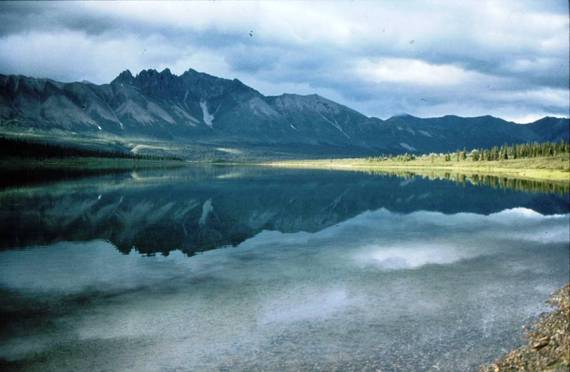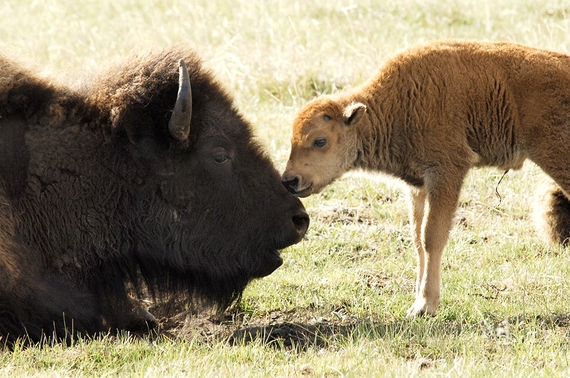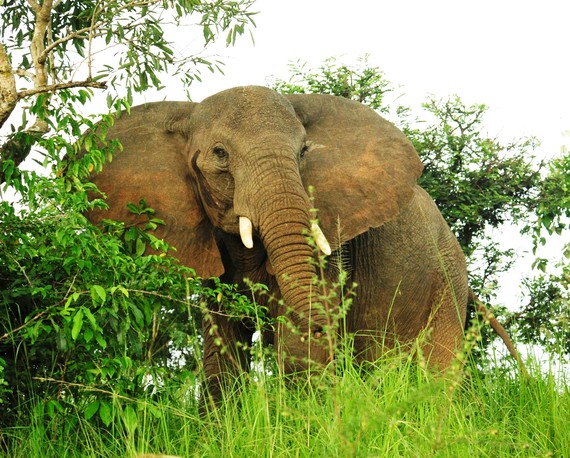We cannot ignore the realities of habitat loss for wildlife, the extinction crisis, and the impact climate change has on nature; but equally as important, we should not forget the good news and the successes through conservation action.
When we remember the successes, we find hope that gives us the strength and resolve to keep working. With that in mind, here are 10 "good news" conservation stories from 2014. Some you may have heard of; some are new. But they all should inspire us to power on for nature in 2015:

A pair of bottlenose dolphins in the waters of Gabon's Mayumba National Park, part of a new system of marine national parks that will protect 23 percent of Gabon's territorial waters. Photo by ©Peadar Brehony.
1. Good News for Oceans
There were a handful of important proclamations that meant good news for our oceans. President Obama created the world's largest fully protected marine reserve in the central Pacific Ocean by expanding the Pacific Remote Islands National Marine Monument from 87,000 square miles to more than 490,000 square miles; the Government of Gabon announced the decision to create a new marine protected area network of ten marine parks covering more than 18,000 square miles; and the Government of Bangladesh created the country's first marine protected area, which will now safeguard whales, dolphins, sea turtles, sharks, and other oceanic species.
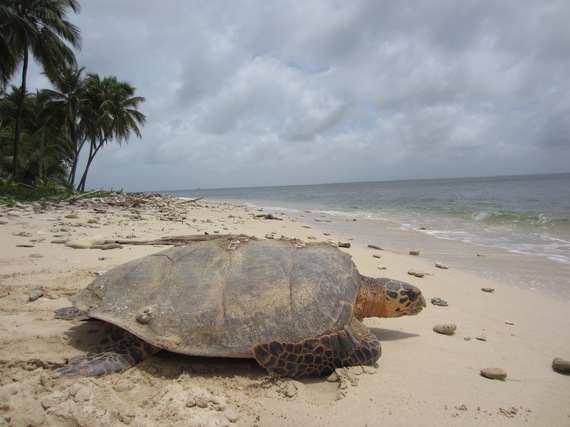
A WCS team in Nicaragua reports a dramatic increase in nesting of critically endangered hawksbill sea turtles in the Pearl Cays region, including the highest nest counts since a conservation project began there in 2000. Photo credit: © WCS
2. Victories for Turtles, Sharks and Rays
In Nicaragua, there was a dramatic increase in nesting of critically endangered hawksbill sea turtles, including the highest nest counts since a conservation project began there in 2000. The total nest count for hawksbill turtles in the project area in Nicaragua's Pearl Cays region increased some 200 percent from 154 in 2000 to 468 in 2014. In Brazil, biologists seeking to learn more about threatened and endangered turtles in the Abufari Biological Reserve hit the mother lode--a mass hatching event producing an estimated 210,000 baby turtles. In Ecuador, conservationists rejoiced at the listing of 21 species of sharks and rays under the Appendices of the Convention on Migratory Species (CMS), made official in the final plenary session of the Conference of Parties (CoP). With these listings, member countries agreed to grant strict protection to the reef manta, all nine devil rays, and all five sawfishes, and committed to work internationally to conserve the three species of thresher sharks, two types of hammerheads, and the silky shark. In Indonesia, the government took a major step to protect the world's largest ray species, the giant and reef manta rays.
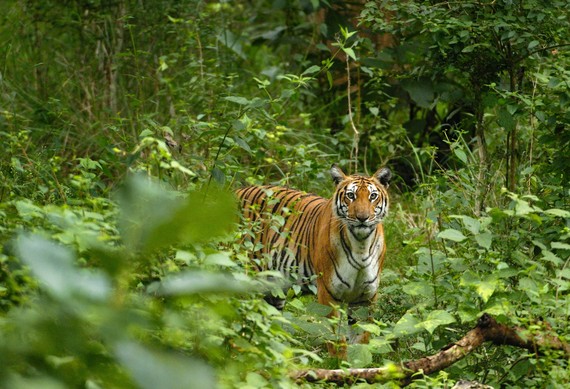
In India, our program reports an estimated 400-plus tigers in the Malenad landscape, with numbers increasing due to great partnerships in and out of the government. Photo by ©Kalyan Varma.
3. Achieving Positive Impact on Tiger Numbers in Thailand and India
As a result of 10 years of continuous conservation efforts in Huai Kha Khaeng (HKK), Thailand, the 2013-14 season is revealing an increase in the tiger population and an expansion of tiger distribution in the landscape. In 2013, the mean abundance of tigers showed the average tiger estimate in HKK to be 50 percent higher than in 2007. Also exciting is that tigers have dispersed from HKK into national parks and wildlife sanctuaries to the north, west, and south of the protected area. These results give us reason to believe that maintaining protection in this area will make it possible for tigers and other wildlife to continue to disperse and repopulate the rest of the Western Forest Complex. And in India, our program reports an estimated 400-plus tigers in the Malenad landscape, with numbers increasing due to great partnerships in and out of the government.

Karukinka's intact forests and peatlands are estimated to sequester more than 300 million tons of carbon annually. Photo by Daniela Droguett ©WCS.
4. A Successful Partnership in Chile
In Chile, 10 years after Goldman Sachs and WCS announced one of the largest gifts of private lands ever given for conservation, Chile's Karukinka Natural Park celebrated a decade of accomplishments, from conservation science, to wildlife and habitat protection, to public education and engagement. Karukinka protects the world's southernmost stands of old growth forests as well as grasslands, rivers, and wetlands. Its intact forests and peatlands are estimated to sequester more than 300 million tons of carbon annually.
5. Important Protections in the United States and Canada
The passage of the National Defense Authorization Act will help safeguard two critically important wild lands in Montana and the iconic wildlife that lives within them--the Rocky Mountain Front and the North Fork of the Flathead River. This action will provide new protection for 275,000 acres of the Rocky Mountain Front and prohibit industrial development on another 430,000 acres bordering Canada. Also, in Canada, the Peel River Court decision ruled in favor of First Nations and conservation so that the plan to protect 80% of the 67,000 square kilometer area (more than 7 times bigger than Yellowstone National Park) of de facto wilderness area was reinstated. In Alaska, President Obama blocked Alaska's Bristol Bay from oil development--ending a multi-year stand-off between development and conservation.
Native groups from the U.S. and Canada joined in September to support restoration of bison; renew cultural and spiritual ties
Photo by Julie Larsen Maher ©WCS
6. Renewing a Commitment to the American Bison
In the U.S. and Canada, dignitaries from U.S. Tribes and Canadian First Nations signed a treaty--the first among them in more than 150 years--to establish inter-tribal alliances for cooperation in the restoration of American buffalo (or bison) on Tribal/First Nations Reserves or co-managed lands within the U.S. and Canada.
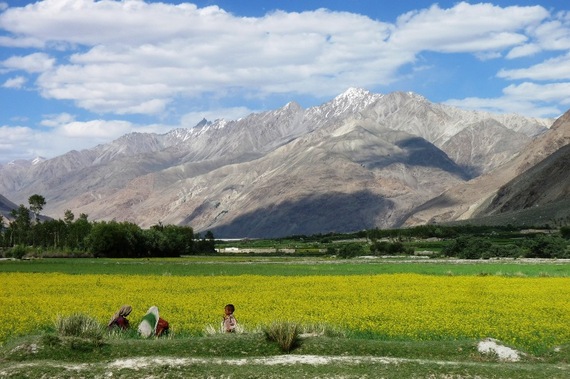
The Wakhan National Park, with its beautiful alpine grasslands and craggy mountains, will provide protection for Afghanistan's rare and vulnerable wildlife. Photo ©WCS Afghanistan.
7. Conservation Success in the Midst of Conflict
In Afghanistan, the government established the entire Wakhan District, one of the most remote areas of Afghanistan, as the nation's second national park. The Wakhan National Park, with its beautiful alpine grasslands and craggy mountains, will provide protection for Afghanistan's rare and vulnerable wildlife such as the snow leopard, Marco Polo sheep, lynx, Himalayan ibex and urial. Also in Afghanistan, WCS conservationists reported seeing Kashmir musk deer, categorized as Endangered by IUCN, for the first time there since 1948.
8. Some positive news on the elephant front
The Obama Administration issued the National Strategy for Combating Wildlife Trafficking and the issuance of a ban on trade in elephant ivory; New York State and New Jersey passed legislation to ban the sale of ivory, and in China, the government destroyed ivory and other wildlife products confiscated from illegal trade at a public ceremony in the city of Guangzhou, Guangdong Province. And a host of powerhouses kept momentum building on behalf of elephants: Hillary Clinton and Chelsea Clinton continued to engage the Clinton Global Initiative on behalf of elephants; the Duke of Cambridge continued his work to stop trafficking of all illegal wildlife and inspire a new generation of conservationists with United for Wildlife; the London Declaration on Illegal Wildlife Trade sent a strong message across the globe that wildlife trafficking is a serious crime, on a global scale; and the European Parliament took powerful action against illegal elephant killing through the passage of a groundbreaking resolution on wildlife trafficking that calls for moratoria on ivory trade and other measures against wildlife crime.
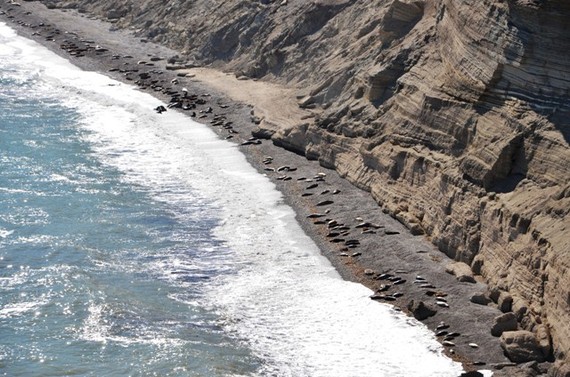
A southern elephant seal colony on Argentina's Patagonia coast. Peninsula Valdes -- teeming with wildlife including southern right whales, Magellanic penguins, massive elephant seals, flightless Darwin's rheas, and camel-like guanacos -- was declared a Biosphere Reserve by (UNESCO) this year. Photo by Cristián Samper ©WCS.
9. An Important Step in Patagonia
Argentina's Peninsula Valdes -- teeming with wildlife including southern right whales, Magellanic penguins, massive elephant seals, flightless Darwin's rheas, and camel-like guanacos -- was declared a Biosphere Reserve by the United Nations Environmental, Scientific, and Cultural Organization (UNESCO). The reserve spans 4 million acres and increases legal protection for wildlife on the peninsula and in adjacent coastal waters.
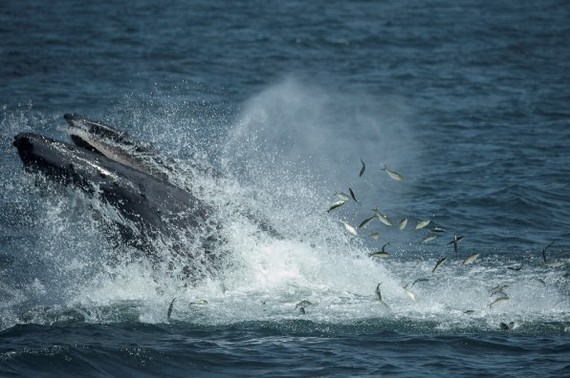
Humpback whales have been seen in growing numbers in the New York Bight, a wedge of water between the New York and New Jersey coasts. Photo by Julie Larsen Maher © WCS
10. And Closer to Home...
One of the most hopeful images this year in conservation was taken by our own WCS staff photographer, Julie Larsen Maher, who captured pictures of a humpback whale just a few miles from New York City. In 2014, there was a major increase in reports of whales feeding within sight of the skyline of our city. And just this week, WCS announced a joint venture with Woods Hole Oceanographic Institution (WHOI) to protect these whales in the New York Bight using new real-time monitoring technology, a program supported by the G. Unger Vetlesen Foundation.
The photograph of that whale in NYC waters and all the stories outlined above should give us hope and determination to not give up on our efforts for nature. A New Year's resolution for all of us: To remember that we can make a difference for our planet.

